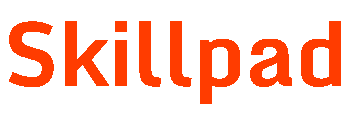Introduction
In the world of human resources and compensation, certain terms and concepts are fundamental to creating fair and consistent practices within organizations. One such term that holds great significance is “benchmark job.” In this blog, we’ll break down the basic definition of a benchmark job, helping you understand its essential role in the workplace.
What is a Benchmark Job?
A benchmark job is a standardised position within the workforce that is consistent across industries in terms of responsibilities, qualifications, and compensation.
These roles act as reference points for organisations to:
- Set Pay Scales: Align salaries with market trends.
- Ensure Equity: Maintain fairness in compensation.
- Evaluate Jobs: Establish frameworks for classifying and comparing roles within an organization.
- Facilitate Workforce Planning: Help organizations anticipate and address talent needs effectively.
Examples of benchmark jobs include roles like software engineer, customer service representative, or financial analyst. These positions are common across industries, making them ideal for market comparisons.

Why Are Benchmark Jobs Important?
Benchmark jobs play a pivotal role in shaping HR strategies. Here are four key areas where they have a significant impact:
1. Compensation Management
Benchmark jobs provide the foundation for developing salary structures. By analysing market data for these roles, organizations can create competitive and equitable pay scales that attract and retain top talent.
2. Market Competitiveness
In a competitive job market, staying aligned with industry compensation standards is crucial. Benchmark jobs help companies assess whether they are paying too little, too much, or just right compared to their peers.
Example: If market data shows that software engineers in your region earn an average of Rs. 1 lakh annually, you can adjust your salary offerings to match or exceed this benchmark, ensuring your organization remains attractive to top candidates.
3. Job Evaluation and Classification
HR professionals use benchmark jobs as reference points to evaluate other roles within the organization. This ensures that positions with similar responsibilities and qualifications are classified fairly and compensated equitably.
4. Legal Compliance
Ensuring compliance with equal pay and anti-discrimination laws is essential. Benchmark jobs help organizations establish pay practices that adhere to these regulations, reducing the risk of legal disputes.
5. Employee Retention and Motivation
Fair and competitive compensation structures foster employee satisfaction and engagement, which are critical for reducing turnover and maintaining a productive workforce.
Here is a tip for you, regularly reviewing and updating your benchmark job data to account for changes in market trends, inflation, and evolving industry standards.
so now arises an important question,
How to Identify Benchmark Jobs
To effectively use benchmark jobs, it’s important to identify the right roles within your organization. Here’s how:
- Consistency Across Industries: Look for roles with well-defined responsibilities and qualifications that are common across organizations.
- Availability of Market Data: Ensure there is ample industry data available for compensation comparisons.
- Significance to Your Organization: Focus on roles critical to your business operations or with large employee populations.
Leveraging Benchmark Jobs for Strategic Advantage
When used effectively, benchmark jobs can transform your HR strategy.
Here’s how to maximize their value:
- Stay Proactive: Regularly benchmark your roles against industry standards to remain competitive.
- Leverage Technology: Use compensation management software to access real-time data and automate benchmarking processes.
- Engage Employees: Transparent communication about how salaries are determined fosters trust and improves employee satisfaction.
- Incorporate HR Analytics: Use data-driven insights to refine compensation practices and support organizational development.
- Enhance Diversity and Inclusion Efforts: Benchmark jobs help ensure pay equity across different demographics, promoting a culture of fairness and inclusivity.
Conclusion
Benchmark jobs are much more than a compensation tool; they are the backbone of fair and equitable HR practices. By understanding and leveraging these roles, organizations can ensure their pay structures are competitive, compliant, and aligned with industry trends. For HR professionals, mastering the concept of benchmark jobs is a step toward building thriving workplaces where employees feel valued and motivated.
Whether you’re focused on employee retention, workforce planning, or legal compliance, benchmark jobs provide the foundation for strategic HR management. Are you ready to elevate your compensation strategy? Start with benchmark jobs and pave the way for fairness and success in your organization!



